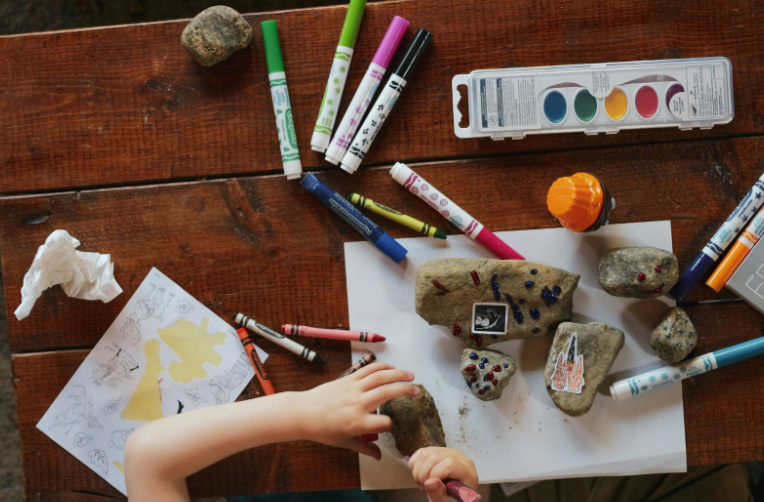
Here at NSTEM, we encourage teachers, students, and families of all ages to explore STEM through hands-on experience and participatory engagement. For those of you looking to bring the classroom outdoors, we have collected five low-budget outdoor STEM projects that will engage even the most fickle of young minds to engage with the natural world around them!
1. Create an Observational Field Book for Your School or Neighborhood
Scientific observation starts with keeping a field book or journal to document all the wonders that cannot be simply captured in a picture. Throughout history, scientists and naturalists have kept field books to document experiences and sensory observations in the field. In this activity, students are encouraged to create personalized diaries before filling them with observations from their school or local community. This Smithsonian project plan also provides guidelines for a range of grade levels.
Link to activity: https://siarchives.si.edu/sites/default/files/pdfs/Create_Fieldbooks_TN2012_0.pdf
2. Make a Backyard Rain Gauge
Looking for creative ways to address water scarcity and climate change with your students? Try making a backyard rain gauge, which can introduce students to the early concepts of meteorology, mathematics, and statistics. By collecting and recording rainwater over time, students and teachers can track average rainfall over different times of the year to understand how farmers (and you) can mitigate water scarcity!
Link to activity: https://www.agfoundation.org/files/AFBFA-AgLit-MAF-191008-RainGaugeActivity.pdf
3. Build a Future Army of Birders
Birding is a great method for observing how the living world around us adapts to physical and behavioral changes and the roles that humans and other organisms play within those systems. This project can be an inventive way for students to observe, report, and analyze food systems. In this way, they can be further prepared to understand and contribute to complex engineering concepts like biomimicry. This activity will also be an excellent choice for any school or community looking to contribute toward their local bird population!
Link to activity: https://www.massaudubon.org/content/download/7014/file/Birds_3-5.pdf?inLanguage=eng-US&version=1
4. Design, Build, and Test Mini-Rockets
In this engaging and inexpensive activity, your future NASA scientists will engineer and build a prototype Food Transportation Device (FTD) in the form of a rocket. In teams, students will work together to test a propulsion system and a payload container capable of carrying their payload of 4 raisins. The goal is for teams to have a blast while building a mini rocket that is both aerodynamic and durable enough to withstand impact!
Link to activity: https://ucanr.edu/sites/YDResources/files/285355.pdf
5. Catapult Competition
For teachers looking to introduce concepts of physics and engineering, we recommend the generous use of catapult technology! This activity tackles the study of kinetic energy in the form of rubber bands and plastic spoons through low-budget design and classroom collaboration. By actively designing, building, and experimenting with catapults and projectiles, students will further seek to understand why and how the world moves and changes.
Link to activity: https://virtualscienceteachers.org/wp-content/uploads/2023/09/Catapult-Activity-2.pdf
By Rosalinda Cardoso
These projects were selected to introduce students to concepts of biological science, scientific observation, engineering, and meteorology for Grades 3-5. At NSTEM, we also know the importance of planning for the inevitable, so should emergencies arise, our projects can be printed and easily modified to be used safely indoors!
Do you want more resources for outdoor biology activities? NSTEM’s vast resources database provides thousands of STEM resources that are searchable by category, school level, and state. This comprehensive library includes info on enrichment activities, curricula, internships, scholarships, and more. Check out a free sampling here. Or get an NSTEM membership today to unlock the complete list.
Grades 3-5 continue the STEM education journey, where students are interested in the natural world and how things work, responding to stories told by teachers that give purpose and meaning to STEM disciplines, molding them into thinkers, problem solvers, and creators. The National STEM Honor Society sees grades 3-5 as a critical point in the NSTEM journey. To start your grade 3-5 chapter of the National STEM Honor Society, click here.
